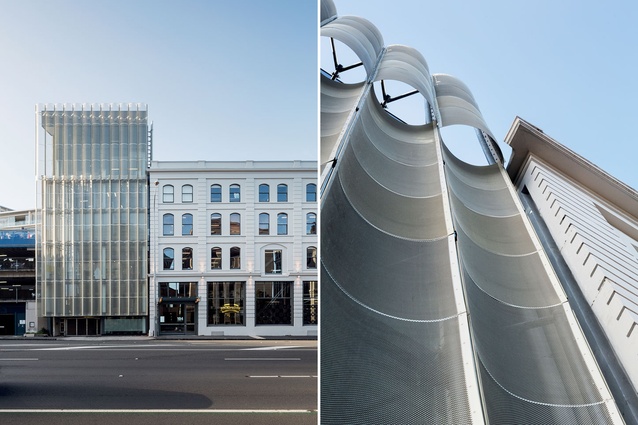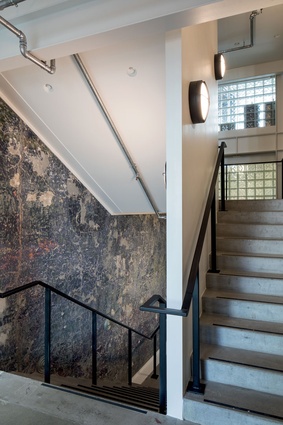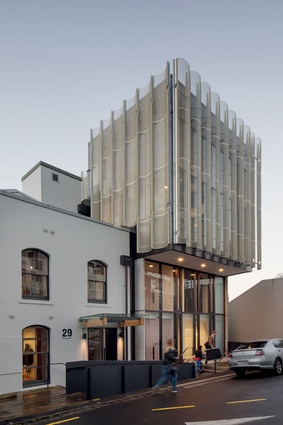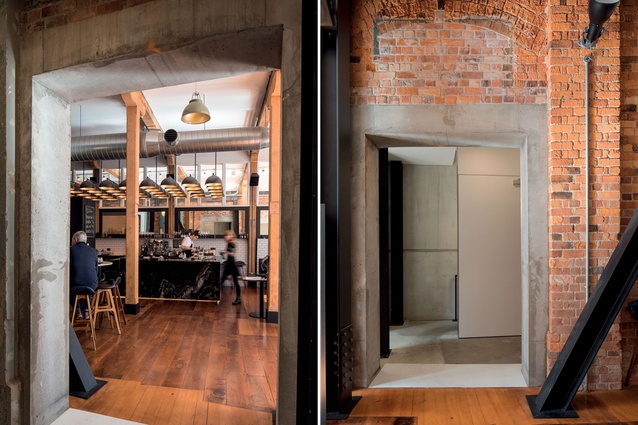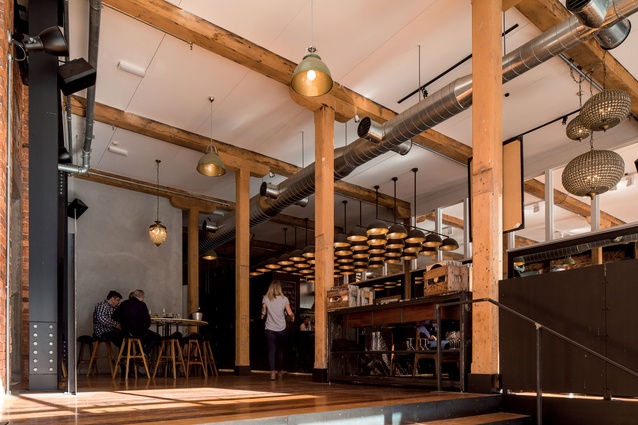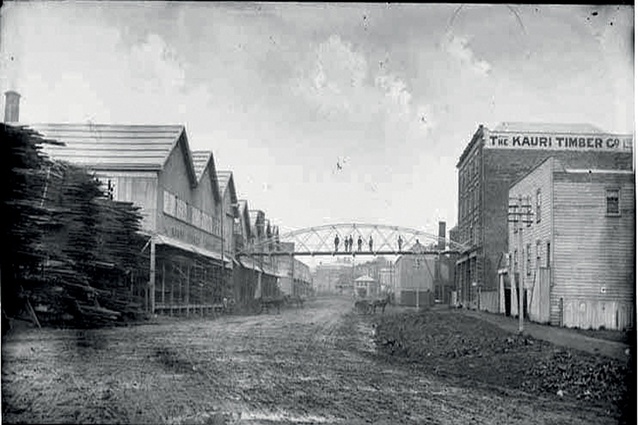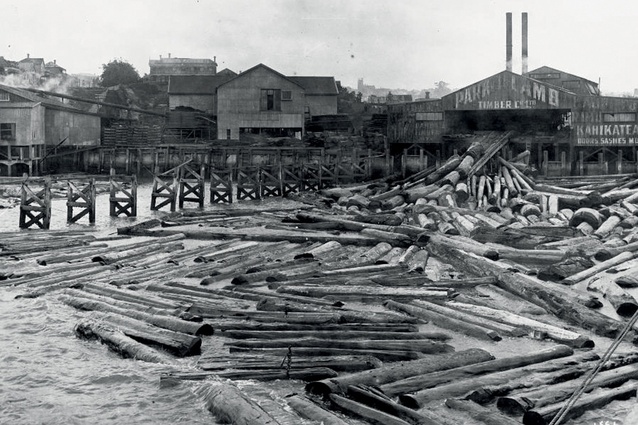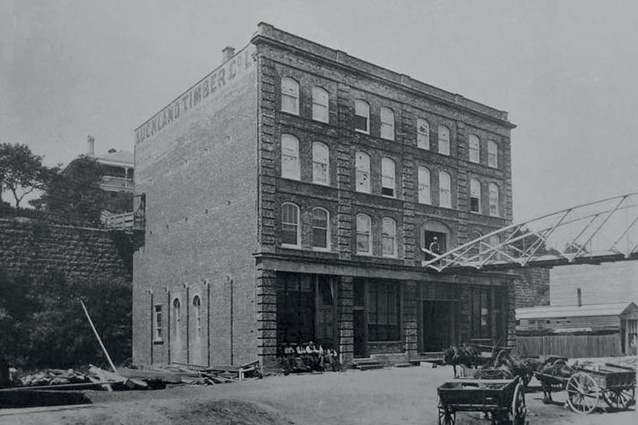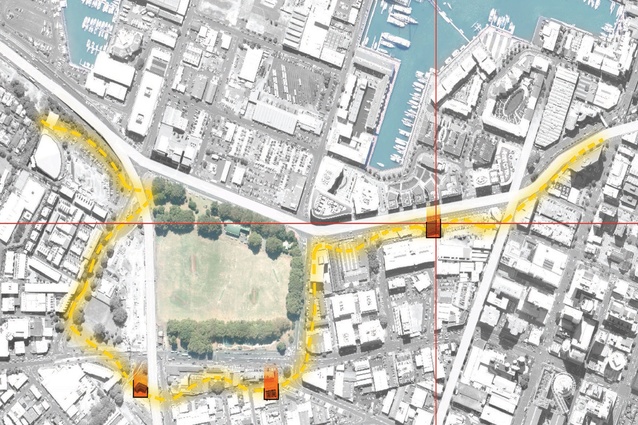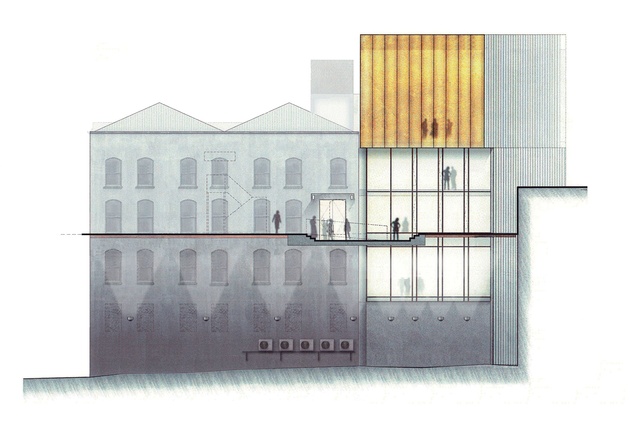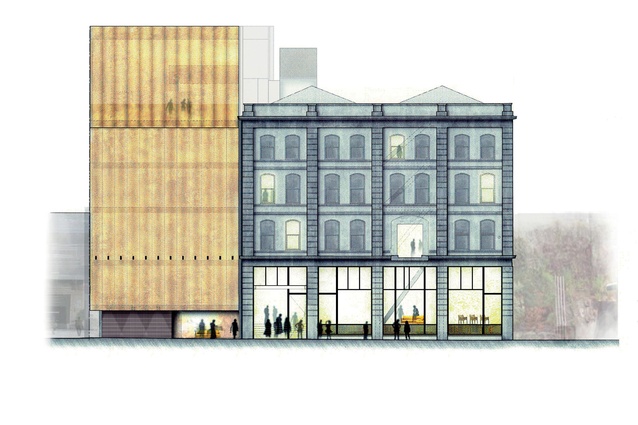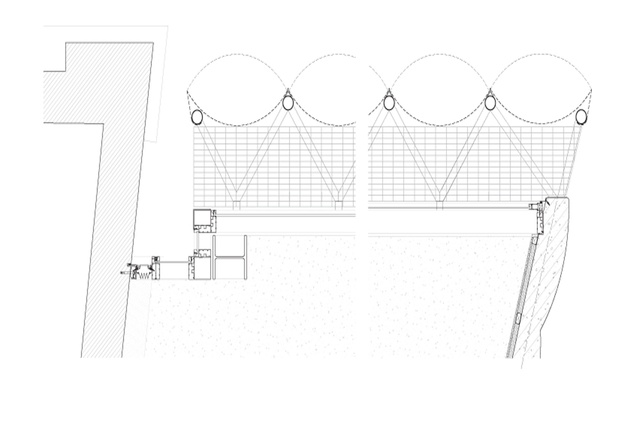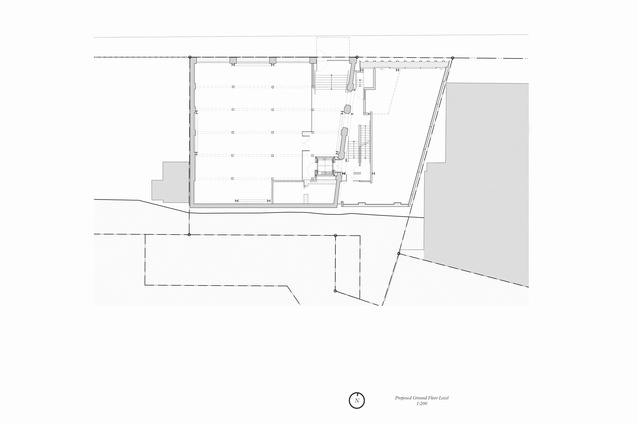Honouring the old: Kauri Timber Building
Fearon Hay Architects has remodelled one of Auckland’s important heritage buildings and complemented it with a new commercial structure that rises above Fanshawe Street.
It’s hard to imagine what Auckland was like during colonial times, when so many of its heritage buildings have been demolished and replaced over the years, but the Kauri Timber Building on Fanshawe Street has a story that reminds us of its archaeological, architectural, social and historical significance.
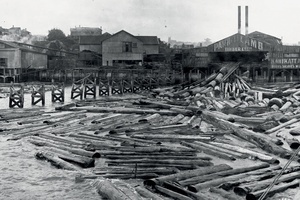
The Kauri Timber Building (KTB) is located on Auckland’s original shoreline in an area called Te Pane Iriiri (the head hung up), within a wider landscape associated with use by several iwi, including Te Waiohua, Ngāti Whātua and Ngāti Pāoua.
This section of cliff face, foreshore and seabed on the Waitematā Harbour was infilled in 1865 and then substantially reclaimed in the late 1880s: a time when Auckland’s economy was expanding and demand increased for commercial and industrial land along the waterfront.
A large basalt sea wall was built to retain the former cliff edge – carried out by hand and cart, a hazardous process, which resulted in one casualty.
In 1881, KTB was constructed to serve the city’s thriving logging industry. A New Zealand Historic Places Trust Pouhere Taonga (NZHPT) report talks about the importance of the kauri timber industry to the New Zealand economy during the late 19th and early 20th centuries and the KTB, at various times, became the headquarters, store and showroom of some of the most important timber companies of the day.
The KTB’s original architect is unknown, although the NZHPT report states that is likely to have been Henry Wade (1835–1900), who designed other structures in the waterfront area around that time and was secretary and treasurer of the Auckland Institute of Architects during the mid-to-late 1880s.
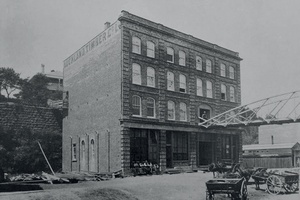
The original brick design is free classical in appearance, laid out over four storeys plus a basement with a frontage of four bays facing Fanshawe Street. It featured offset doors and large windows at ground-floor level and rows of arched windows on the other floors.
At first-floor level, the western end of a wire suspension pedestrian bridge pierced the façade, providing direct access into the building from the main sawmill and manufacturing complex erected on the opposite side of Fanshawe Street from 1878 to 1880.
On completion, the building was described in The Auckland Weekly News (4 March 1882) as “one of the handsomest blocks of buildings in that locality”.
Fearon Hay Architects has designed the recent development, acknowledging the scale, proportion and detail of the existing building and contributing to the sequence of built form along the street. Three structures mark the old foreshore: the KTB, the Leopard Tavern (originally known as the Freeman’s Hotel) and the Birdcage (the Rob Roy Hotel).
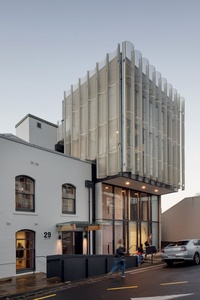
The new building sits on a wedge of space backed by the old basalt sea wall, which has Graham Street running along the top, explains Jeff Fearon, a director of Fearon Hay Architects. “The Council car park is on the eastern wall of the KTB and Fanshawe Street is in front, so the new building is on a site that is of a scale which is not really commercially viable for undertaking a stand-alone development but, when you pair it with the floor plates of the KTB, it makes sense.”
The clients brought the historic building up to 100 per cent of the seismic code, as well as implementing its restoration and upgrade. The architects’ job was to come up with a vertical circulation strategy that serviced both buildings; Fearon explains: “We said to them ‘you’ve got a great, highly visible frontage on Fanshawe Street but, actually, all of your people are in behind on Graham Street and the Victoria Quarter is a great catchment. We think the building should create a new address on Graham Street and take people down to Fanshawe by weaving a stair and lift strategy between the two buildings.”
A key design strategy was to place the Fanshawe Street entrance into the KTB. Fearon explains: “We wanted the heritage building risen up off the street, with a fantastic hospitality offering in the atrium that also serves as a coming-and-going point for the occupants of the building. You can also walk down from Graham Street, through the Rockefeller Champagne and Oyster Bar and into Fanshawe Street.”
Doug Weir, project architect at Fearon Hay Architects, adds: “Opening up the thoroughfare to the public was really important. We spent a lot of time trying to develop the internal nature and the connection between the existing and the new, and the public interface. Working through, there were a number of different challenges – between punctuating the historic building versus fire, seismic and vertical transportation; it took quite a lot to unlock that cherry.”
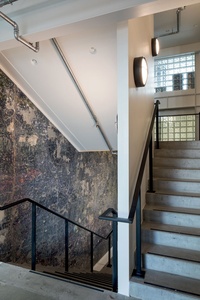
Another trick was to align the floor plates between buildings to make sense of the circulation. Four brace frames go all the way down, allowing the existing masonry building to sit in place.
Within the circulation route, the eastern exterior wall is left exposed and the architects have inserted the lift inside the floor plate of the KTB and used the lift to stiffen the frame. The stairs are part of the structure of the new building, with windows that expose the sea wall so it can be experienced on both sides and, also, lit up at night.
The balance of the brief was to maximise the commercial floor plates for tenancies that could occupy the wedge. “The new building was always going to rise above the mass of the existing, which is important because it’s actually a building in three full dimensions,” states Fearon.
“It stands high above the Council car park and it will always stand higher than the protected heritage building. For that reason, we were also able to look at glazed, enclosed upper two levels and consider how you might gain views up and down Fanshawe Street to the east and west.
“The new building is more ethereal and has a lighter visual presence than the mass of the historic KTB,” says Fearon. “Its distinctive façade came about from the conceptual starting point of the kauri logs,” says Weir. “We were looking for a relationship with the existing building through a datum and so we looked at the slip between the convex and the concave.”
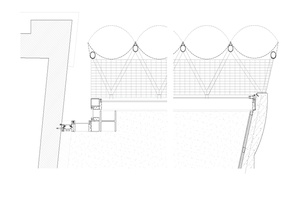
Weir suggests that the façade started as more of a curtain-wall façade, “but that it was value-engineered a number of times before we ended up with what we’ve got, which was an Alucobond-type façade. We did a lot of research and development in terms of designing the spigots and geometry, and trying to find efficiency of structure, versus design, supporting elements and arrangement.
“We worked with the façade engineer (Harrison Grierson) and came up with the triangular bracket that comes out and supports the vertical sticks. Where we couldn’t make connections back to the building, we worked through where we could do a triangular lateral brace, so we could extend the façade out on the corners. This was a unique and useful way of getting the façade to be holistic and the way that we wanted it in terms of its supporting nature.”
The perforations are hexagonal, which was a client request; while these look great from a distance, they’re a little disorientating up close.
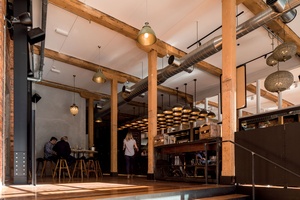
The developers have done a nice job retaining the historical nature of the existing building – particularly apparent in the timber columns, beams, ceilings and floors. In fact, it’s difficult to think of a building in Auckland with this quantity of kauri in the structure, although it’s a shame that commercial realities couldn’t allow the historic building to be left more open in plan – to really showcase its enviable structure – rather than require it to be carved up into different tenancies.
Fearon Hay has shown a light and sensitive touch, honouring and complementing the old KTB by creating an elegant new building that is a distinctive addition to the streetscape but, thankfully, it does not overpower it.

